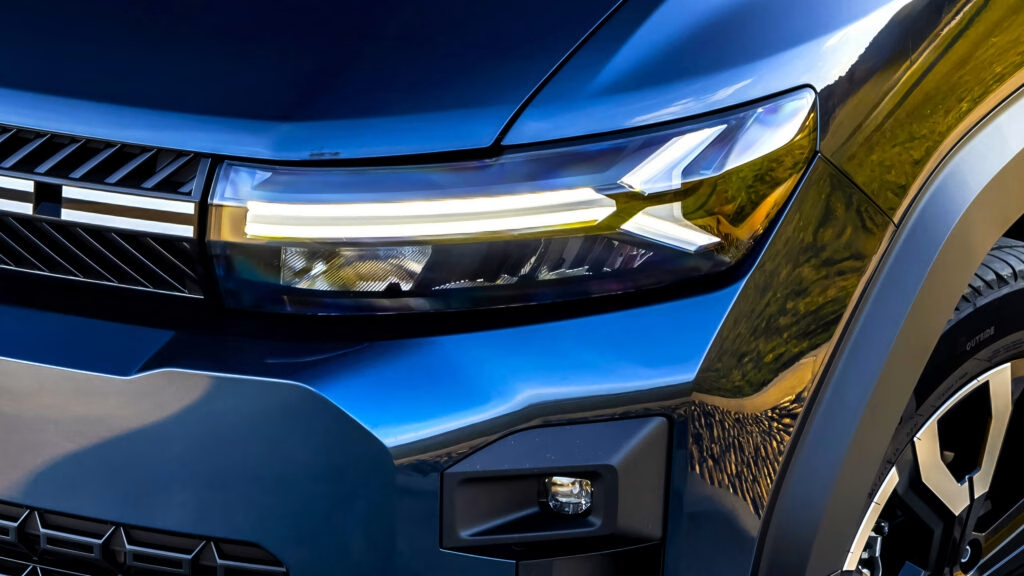The automotive landscape is shifting dramatically, and if you’ve been keeping an eye on car prices lately, you’re not imagining things. Prices are climbing, and it’s not just a minor uptick; we’re talking about significant increases that are reshaping the market. With rising costs driven by stricter emissions regulations, electrification, inflation, and tariffs, the dream of owning a new car is becoming less attainable for many. Yet, amidst this turmoil, one brand has managed to defy the odds.
How Did Dacia Manage to Boost Sales While Raising Prices?
In a surprising twist, a Romanian budget brand, likely Dacia, has raised its average transaction prices by a staggering 48% while simultaneously increasing sales by 19% in Germany. This is quite the feat, especially in a market where many are feeling the pinch. According to data from JATO Dynamics, this brand’s average transaction price hovers around €15,000 (approximately $17,200), making it a standout in an increasingly expensive market.
Dacia has carved out a niche for itself by offering practical, no-frills vehicles that appeal to budget-conscious consumers. The Sandero, for instance, was Europe’s best-selling model in 2024, showcasing the brand’s ability to resonate with buyers looking for value without the extra fluff.
What Makes Dacia’s Pricing Strategy Work?
Despite the price hikes, Dacia’s lineup remains among the most affordable options in their segments. The brand’s straightforward approach—focusing on essential features and sensible pricing—continues to attract buyers who prioritize functionality over luxury. For example, in Germany, the Sandero starts at €12,490 ($14,300), significantly lower than many competitors in the small hatchback category. This pricing strategy is refreshing for those tired of inflated prices and unnecessary extras.
Dacia’s upcoming models, like the Bigster SUV, are also priced competitively, with the base model landing at €23,990 ($27,400). This clear pricing structure appeals to consumers who are increasingly frustrated with the rising costs of new vehicles.
What’s Happening in the Broader Market?
While Dacia thrives, the broader German automotive market is facing significant challenges. New car prices have surged by 40% since 2019, leading to a 22% drop in overall sales volumes. The most affected segment? Cars priced under €30,000 ($34,400), where affordable options are dwindling. Many consumers are finding themselves priced out of the new car market altogether, forcing them to consider financing, leasing, or even turning to the used car market.
The issue of affordability is compounded by the fact that, despite a 24% increase in net salaries over the same period, wages haven’t kept pace with vehicle inflation, resulting in an 11% drop in overall affordability. This disconnect is pushing many potential buyers away from new cars, creating a challenging environment for automakers.
Why Are Electric Vehicles Contributing to Higher Prices?
One of the primary drivers of the rising car prices is the shift towards electrification. As manufacturers invest in battery technology and electric drivetrains, the costs associated with these advancements are passed on to consumers. Interestingly, a recent study found that only about one-third of the overall price increase is directly linked to fully electric vehicles. This suggests that while the market is expanding in terms of electric offerings, the transition is also making it more expensive for buyers.
What Lies Ahead for Automakers?
The current situation poses a significant risk for automakers. As they increasingly rely on a smaller, wealthier customer base, the potential for sustainable growth diminishes. If affordability continues to erode, the foundation for future sales could crumble. Analysts are urging manufacturers and dealers to rethink their strategies, emphasizing the need to cater to a broader audience rather than just chasing higher profit margins.
The automotive industry is at a crossroads. With rising prices and shifting consumer preferences, it’s crucial for brands to adapt. Dacia’s success story serves as a reminder that there’s still room for value-driven options in a market that often prioritizes luxury and excess.
The big takeaway? The automotive market isn’t just about selling cars; it’s about understanding the evolving needs of consumers. As prices continue to rise, finding ways to offer genuine value will be key to attracting buyers. If you’re in the market for a new vehicle, consider starting with one practical choice this week, and you might just find it’s the right fit for your budget and lifestyle.

